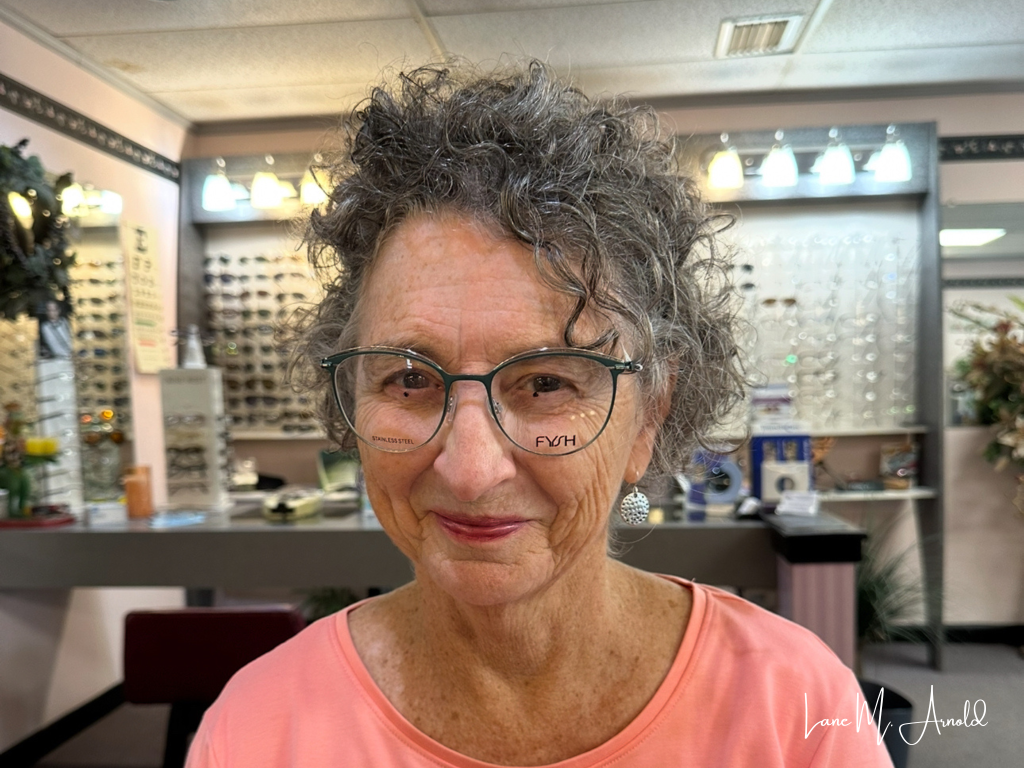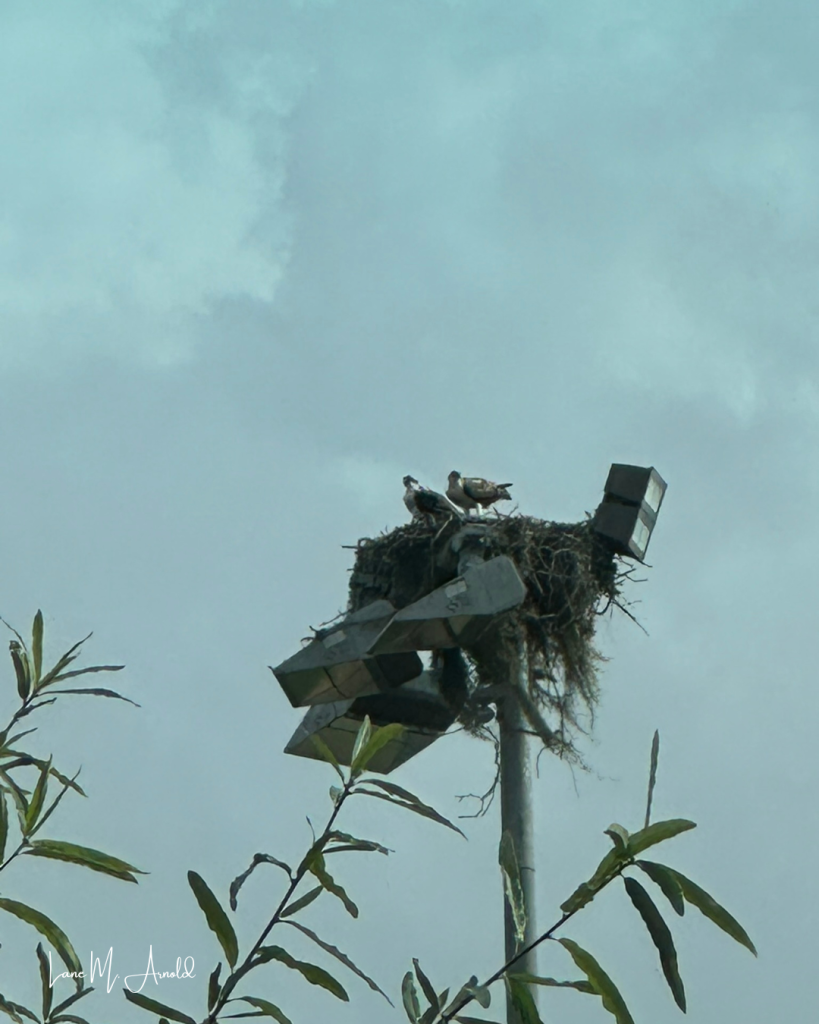I walk up to the receptionist’s window. Bright cartoon stickers greet the eye everywhere I glance. I observe that I’m the only adult strabismus patient in the room. The journey to this waiting room, where there are more well-loved toys than dog-eared magazines, and more tears and laughter than polite, silent, in-their-chair adults, involved multiple tests and many eye doctors. It took several years for those in the know to figure out why my vision struggled to be corrected by standard glasses lenses.
Double vision, loss of depth perception, and utter frustration eventually led to five ophthalmologists who gave me back the gift of accurate sight. Along the way, I’ve had my eyes or glasses patched so I could only view through one eye. Surgery addressed a wrinkled retina. Prisms within my glasses lenses corrected my vision.
Before this all began, I’d never heard of vision therapy. It’s like physical therapy for the eyes. Have you ever heard of Pencil Push-Ups? Those yellow wooden pencils we used in elementary school seem to have many uses. In the Pencil Push-Ups exercise, they train eye muscles to converge so double vision becomes less of an option.
When you’ve experienced vision difficulties like I have, you don’t take sight for granted. You also become quite familiar with recurring questions from eye doctors: “Which is better, 1 or 2? A or B?” You also notice how many sayings involve visual imagery:
- See what I’m talking about?
- I need to see it to believe it!
- Let’s keep an eye on it.
- I see where you’re coming from!
- Look on the bright side.
Seeing Beyond the Physical
When the predictable (sight) becomes unpredictable (double-vision), comfort comes in the form of Bible verses as physical vision struggles linger. Eyes, vision, and sight appear throughout Scripture. I hold verses close, praying in and around them when my eye difficulties seem insurmountable.
- O taste and see that the Lord is good. Psalm 34:8
- I am still confident of this: I will see the goodness of the Lord in the land of the living. Psalm 27:13
- “I see people; they look like trees walking around.” Mark 8:24
Along with the physical aspects of sight, the reality is that we all long to be seen. This desire, to be seen beyond the physical dimension, taps into our longing to be known. We ache to know we are not invisible. Being known and loved are good grounding gifts. God is the God who sees. What comfort!
Given my history of unpredictable sight issues, it shouldn’t be surprising that the desire for sight (physical) and the desire to be seen (emotional) are vital elements that I emphasize when working with writers. With sight difficulties as part of my journey on this earth, I appreciate vision more than before the challenges began.
Using Visual Imagery in Writing
God’s gift of our five senses provides variety and dimension to our writing life. We tend to think of poetry as a central place for the senses to appear on the page. Yet sensory writing isn’t reserved for poetry or prose. It belongs in every writing we delve into as writers. We wouldn’t say that seeing is limited to art galleries or magnificent sunsets in a national park. So we wisely include words about visual experiences and imagery in our writing projects.
The sense of sight provides details that set up scenes. Visual cues and clues enhance a reader’s engagement, imagination, and memories, whether fiction or nonfiction. This invites readers to enter our words three-dimensionally as we create a book or an essay.
Since we want readers immersed in our words, we craft thoughts and scenes that provoke a response. Our descriptions resonate with or repel readers and keep them turning the pages, engrossed with the views we describe.
Sensory words provoke such a response. They shift facts into fantastic, memorable ideas. They turn text into textures in a room in tantalizing scenes. They turn scenes into moments that the reader can picture. The reader sees the dolphin leaping over white-capped waves as a magenta-and-lavender sky says good morning to the world. Then, when the reader recalls a time at the beach, it solidifies the novel’s words into memory. In an inspirational book, when the author tells their own story and describes how the room looked after a festive celebration or a housing disaster, the reader steps into nonfiction and becomes part of what happens.
Though sight is familiar and easy to use in our writing, it’s sometimes so familiar that we overlook its value. It’s good to return to the basics of our senses and consider what words to include and what to leave out. What aspects of seeing might you incorporate in your current creative endeavors? Broad categories cover things such as:
- Color
- Shape
- Size
- Pattern
- Perspective
- Motion
Rear and side-view mirrors provide new landscape angles around the car. So, when we write with a slant, let’s write like a mirror. Come from different perspectives, such as:
- Focused
- Fuzzy
- Partial
- Full
- Angled
- Light
- Shadows
What happens if we add a view from the periphery? What if we increase or decrease depth perception? Imagine using a camera with a macro or micro lens. What would need a different description now? What if the story’s character lacks color perception? What if the scene takes place when the electricity suddenly fails? What if it occurs outside or when a sudden storm blows through the open windows? How would that change the words written and the readers’ perspective?
Sensory words lend themselves well to visual imagery but can also express what happens within a person. As writers, our goal is always an arc of change in the manuscript that moves the book forward page by page and transforms readers when they engage with our words. Words that describe color, shape, size, patterns, perspective, and motion can depict moods, memories, moments, and emotional elements that resonate with humans.
Even now, as you read these reminders on how to write with depth and perception, how would you describe your mood with a color or a shape? After days of endless rain, the dawn sun just peeked in through my curtains. Like my blouse’s color, I feel joyful and bright, like a tangerine, full of zest and zing. My morning walk will be dry under a cloud-free sky rather than damp, humid, and soggy.
You know how to do this construction that brings your words to life. You know how to dispense it at the correct time, so as not to overwhelm the reader with too many details. Sometimes we need to finish the rough draft before we return to refine sensory words. Though discussing our most talked-about familiar sense of sight may seem elementary, small details can create incredible sights on the page for the reader to enjoy.
What matters about our vision? What aspects of visual imagery might need to be shored up or explored in your current writing project? I value sight in my sojourn with visual difficulties, so I’m curious what vision and sight are like for you. What sense is the easiest for you to write about, and which is the hardest?
Let’s keep an eye on how we write about our senses and see what happens on the page and to the reader in the process.
Writing Prompts to Practice the Use of Visual Imagery
- The waiter served the older gentleman his dinner while his granddaughter awaited her meal’s arrival.
- Describe what’s on the plate, in the bowl, and in the crystal glasses on the table.
- Her bicycle was old.
- What lets the reader know the bike has seen better days?
- From the summit of Mount Observation, the three friends saw…
- What did they each see?
- Experiment with these words to see how they change the scene’s atmosphere or theme.
-
-
- Gaze
- Glance
- Glare
- Glimpse
- Peek
- Peep
- Stare
- Squint
-
When we play around with words and add sight as a sense, like eye doctors, we may need to ask, “Which is better, 1 or 2? A or B?” We seek clarity and content that invites readers to see what we want them to see.
Enjoy playing with visual imagery words to enhance your writing and the reader’s experience. I’d love to read some examples of your use of the sense of sight in your writing.





